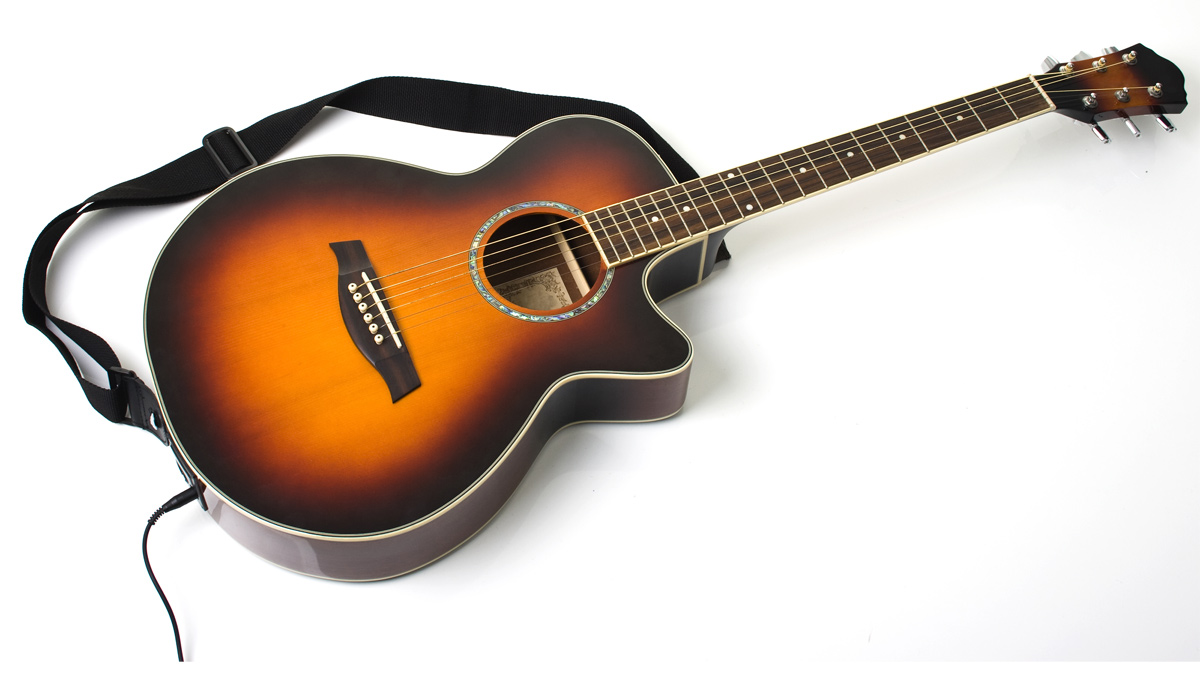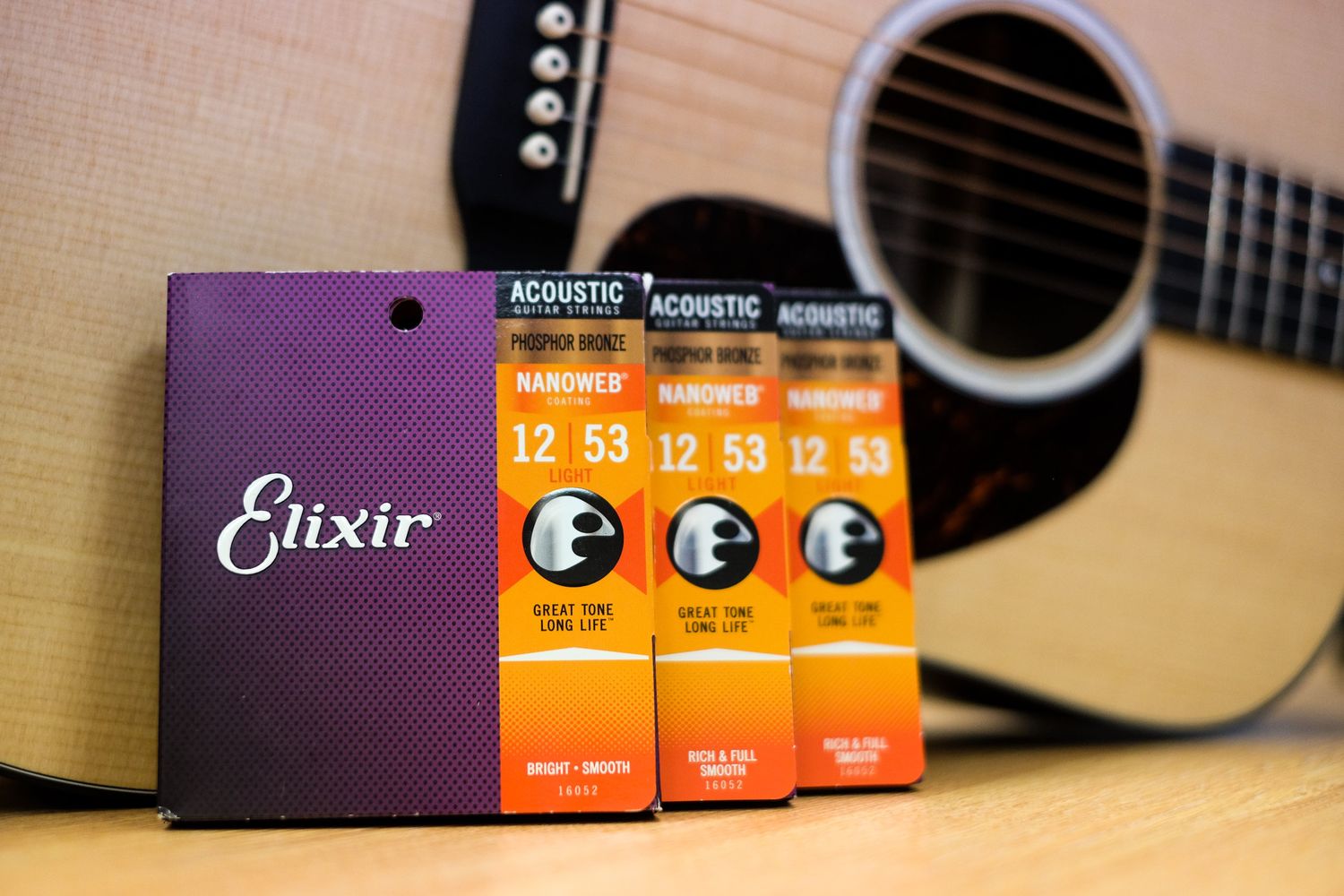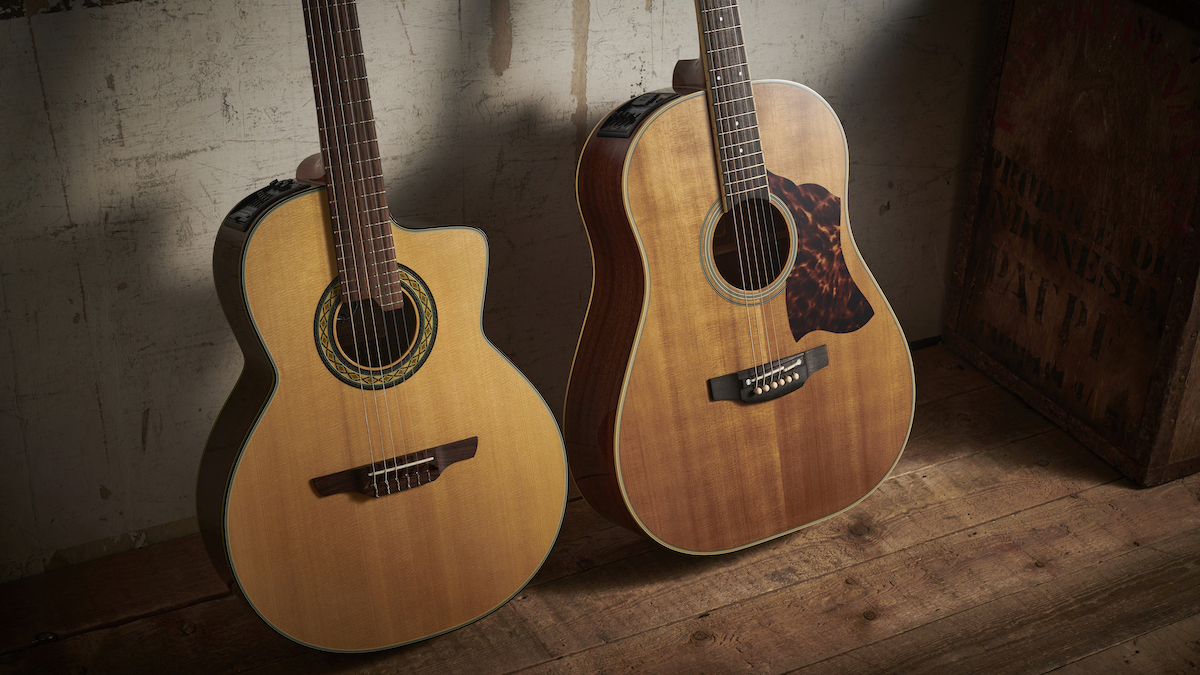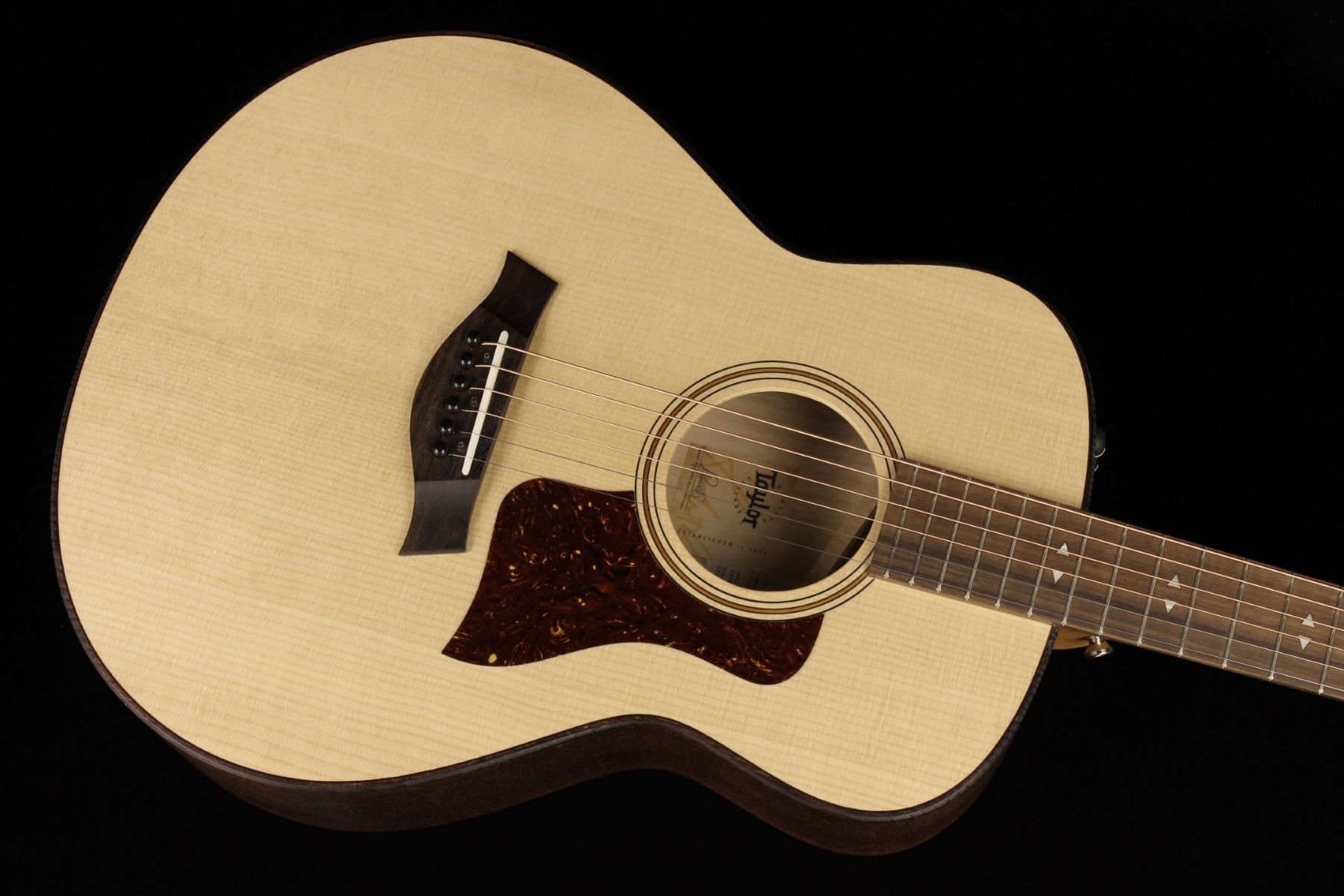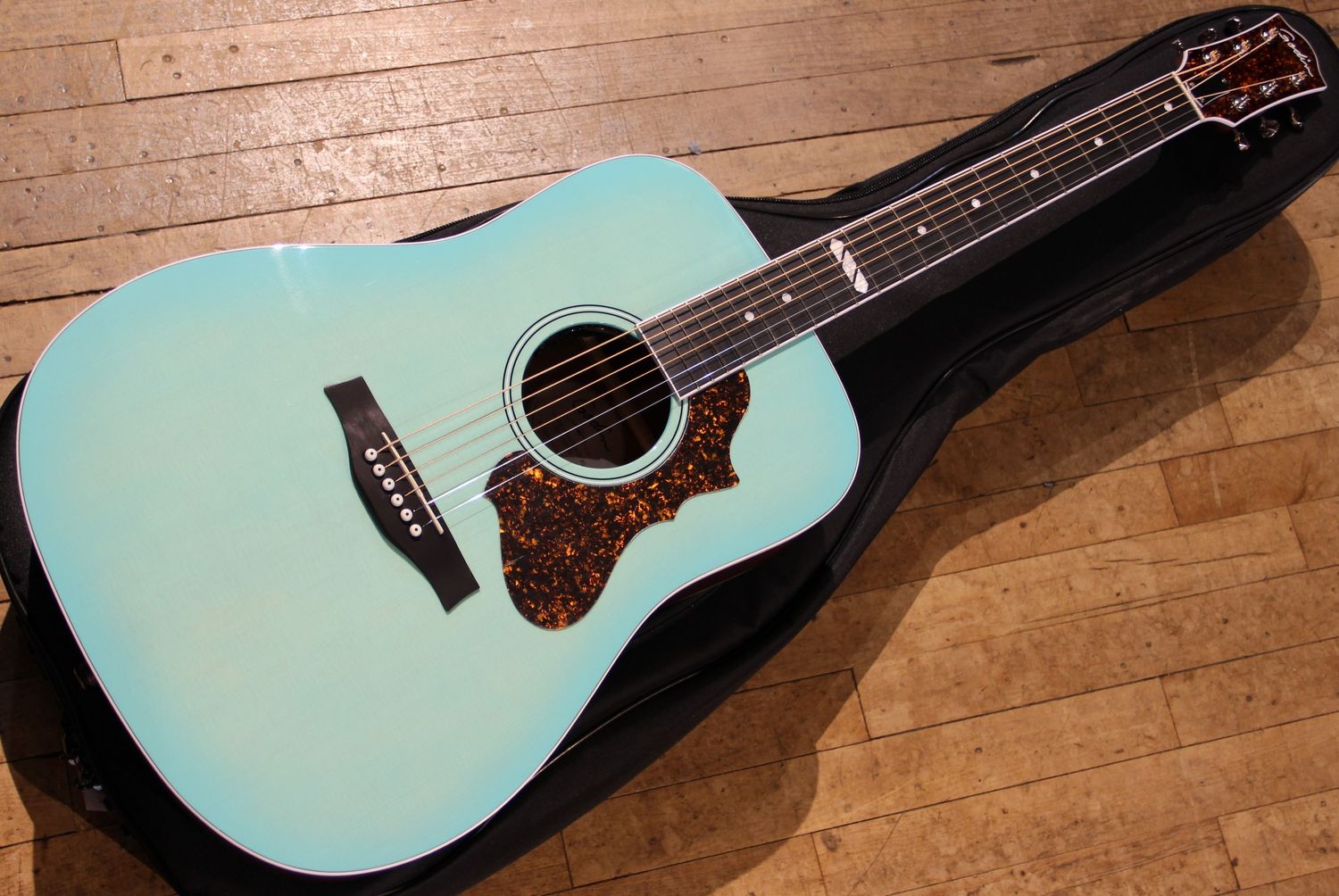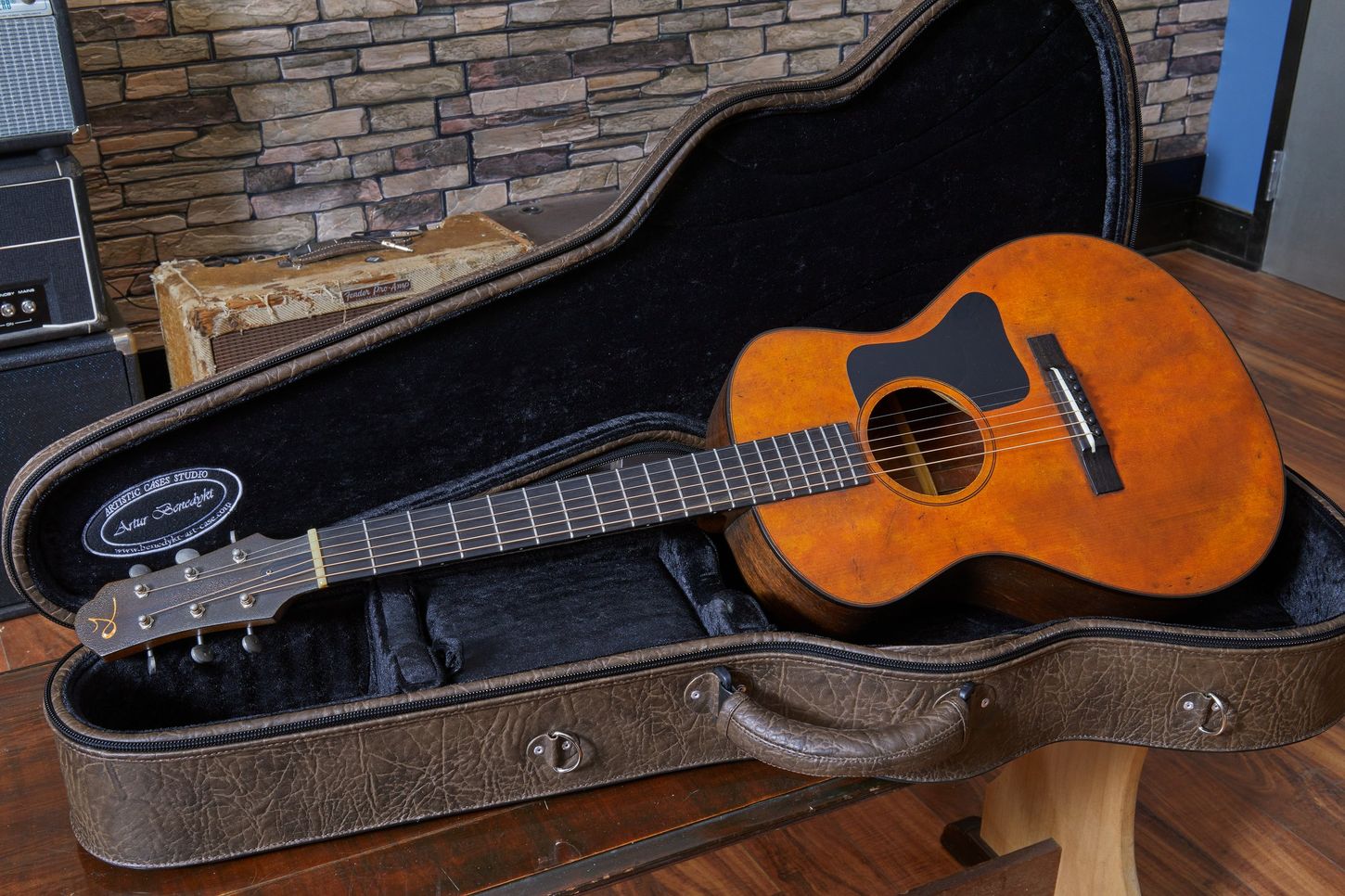Home>Production & Technology>Acoustic>What Is A 3/4 Acoustic Guitar
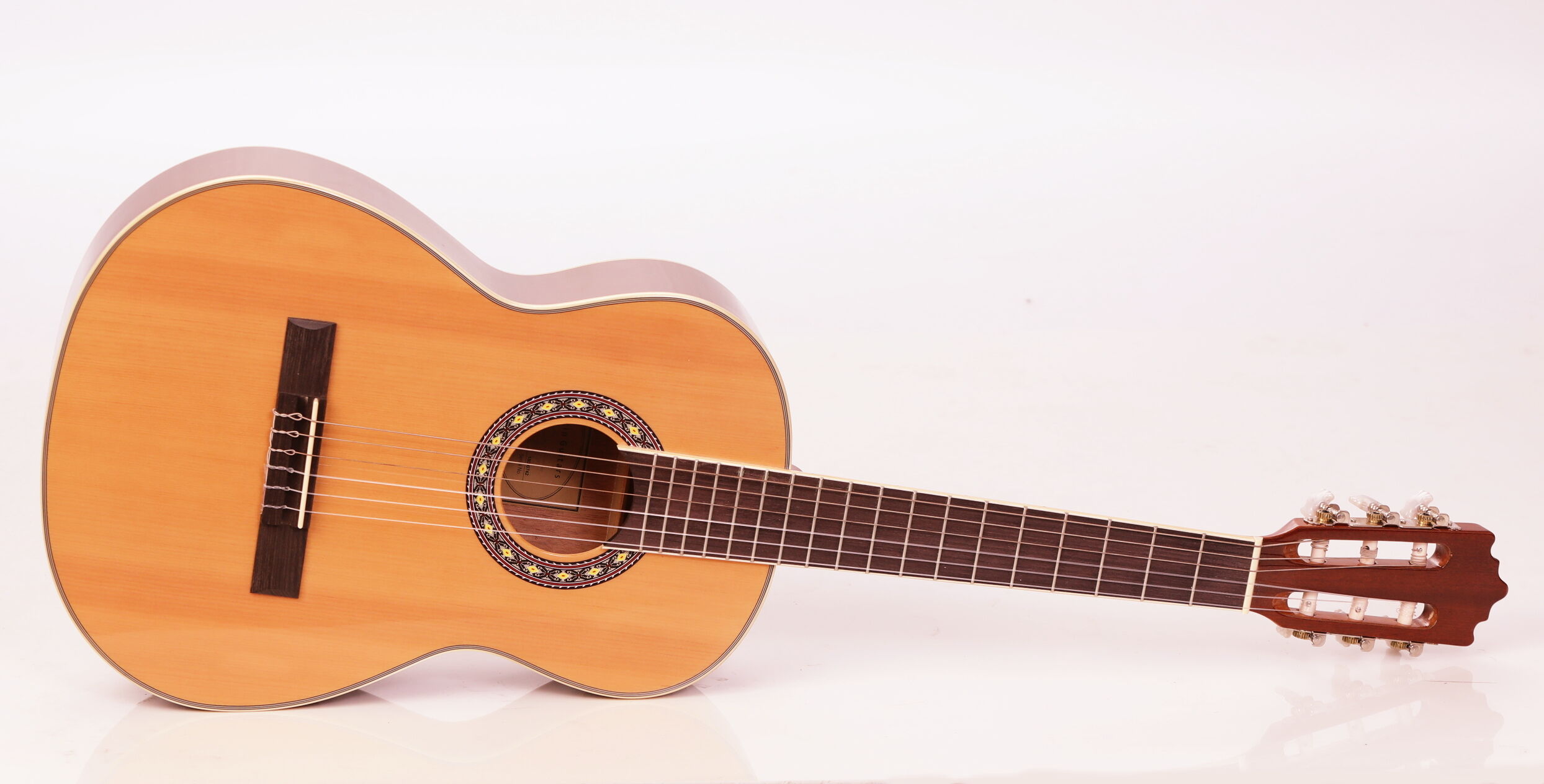

Acoustic
What Is A 3/4 Acoustic Guitar
Published: March 11, 2024
Discover the benefits of a 3/4 acoustic guitar and how it can enhance your playing experience. Find out why a 3/4 size is perfect for beginners and traveling musicians. Explore the versatility and convenience of a smaller acoustic guitar.
(Many of the links in this article redirect to a specific reviewed product. Your purchase of these products through affiliate links helps to generate commission for AudioLover.com, at no extra cost. Learn more)
Table of Contents
Introduction
When it comes to the world of acoustic guitars, there's a wide array of options to choose from, each catering to different playing styles, preferences, and physical attributes of the player. One such option that often sparks curiosity and interest is the 3/4 acoustic guitar. This unique instrument holds a special place in the hearts of musicians, especially those who are just starting their musical journey or are looking for a more compact and portable alternative to the standard full-size acoustic guitar.
The 3/4 acoustic guitar, as the name suggests, is three-fourths the size of a regular acoustic guitar. Its smaller dimensions make it an appealing choice for individuals with smaller hands, such as children, teenagers, and petite adults. Additionally, its compact size makes it a convenient travel companion, allowing musicians to strum their favorite tunes wherever they go.
Despite its smaller stature, the 3/4 acoustic guitar is not to be underestimated. It possesses its own distinct charm and character, capable of producing beautiful, resonant tones that can rival those of its full-size counterparts. Whether it's used for intimate performances, songwriting sessions, or casual jam sessions with friends, the 3/4 acoustic guitar has carved out a niche for itself in the acoustic music landscape.
In this article, we'll delve deeper into the world of 3/4 acoustic guitars, exploring their unique features, differences from full-size guitars, and the advantages and disadvantages they offer. Whether you're a seasoned guitarist looking to expand your collection or a beginner eager to embark on your musical journey, understanding the nuances of the 3/4 acoustic guitar can provide valuable insights to help you make an informed decision. So, let's embark on this musical exploration and uncover the captivating allure of the 3/4 acoustic guitar.
Definition of a 3/4 Acoustic Guitar
A 3/4 acoustic guitar is a scaled-down version of a standard full-size acoustic guitar, designed to offer a more accessible and comfortable playing experience, particularly for individuals with smaller hands or those seeking a more portable instrument. The term "3/4" denotes that the guitar is three-fourths the size of a regular acoustic guitar, making it a popular choice for children, teenagers, travelers, and petite adults.
Despite its smaller dimensions, a 3/4 acoustic guitar retains the essential characteristics and tonal qualities of its full-size counterpart. It typically features a slightly shorter scale length, reduced body size, and a narrower neck, all of which contribute to its compact and lightweight nature. This makes it easier for players with smaller hands to navigate the fretboard and execute chords and melodies with greater ease and comfort.
The construction of a 3/4 acoustic guitar mirrors that of a standard acoustic guitar, with a soundboard, back, and sides crafted from quality tonewoods such as spruce, mahogany, or cedar. The choice of tonewoods greatly influences the instrument's tonal profile, with spruce offering bright and articulate tones, mahogany providing warmth and depth, and cedar delivering a balanced and resonant sound.
In terms of sound production, a well-crafted 3/4 acoustic guitar is capable of producing rich, vibrant tones that resonate with clarity and expressiveness. While it may not project sound with the same volume and depth as a full-size guitar, its tonal character and articulation make it a compelling choice for intimate performances, studio recordings, and acoustic jam sessions.
The 3/4 acoustic guitar also serves as an ideal entry point for beginners, offering a more manageable instrument size that reduces physical strain and facilitates the learning process. Its smaller frame encourages proper playing posture and technique, allowing novice players to develop their skills with greater comfort and confidence.
Overall, the 3/4 acoustic guitar embodies a harmonious blend of playability, portability, and tonal versatility, making it a valuable addition to any guitarist's collection and a cherished companion for musical exploration and expression.
Differences Between a 3/4 Acoustic Guitar and a Full-size Acoustic Guitar
The differences between a 3/4 acoustic guitar and a full-size acoustic guitar extend beyond their physical dimensions, encompassing various aspects that influence playability, sound, and overall user experience. Understanding these distinctions is crucial for individuals seeking the most suitable instrument to match their playing style, physical attributes, and musical aspirations.
Physical Dimensions
The most apparent dissimilarity lies in the physical size of the guitars. A 3/4 acoustic guitar, as the name suggests, is three-fourths the size of a standard full-size acoustic guitar. This reduction in size translates to a shorter scale length, a smaller body, and a narrower neck, making it more accommodating for individuals with smaller hands, such as children, teenagers, and petite adults. In contrast, a full-size acoustic guitar offers a larger frame, longer scale length, and wider neck, catering to players with average to larger hand sizes.
Playability
The physical dimensions directly impact the playability of the guitars. A 3/4 acoustic guitar's reduced scale length and narrower neck facilitate easier reach and fretboard navigation for individuals with smaller hands, enabling them to execute chords and melodies with enhanced comfort and dexterity. On the other hand, a full-size acoustic guitar may pose challenges for players with petite hands, requiring greater finger stretch and hand span to maneuver across the fretboard.
Sound Projection
While both guitars share similar tonal characteristics, the size disparity influences their sound projection. A full-size acoustic guitar, with its larger body and longer scale length, typically produces louder, more resonant tones with greater depth and volume. In contrast, a 3/4 acoustic guitar may exhibit slightly reduced projection and volume due to its smaller body size. However, advancements in guitar design and construction have enabled 3/4 acoustic guitars to deliver impressive tonal clarity and resonance, making them suitable for intimate performances and studio recordings.
Portability
The compact nature of a 3/4 acoustic guitar renders it highly portable, making it an ideal travel companion for musicians on the go. Its smaller size allows for easy transportation and storage, catering to individuals seeking a lightweight and convenient instrument for practice, songwriting, and impromptu performances. In contrast, a full-size acoustic guitar, while offering robust sound projection, may pose challenges in terms of portability and maneuverability, especially for young players and travelers.
Versatility and Adaptability
Both guitar sizes offer unique advantages based on the player's physical attributes, playing style, and intended usage. A 3/4 acoustic guitar excels in providing a comfortable and accessible playing experience for individuals with smaller hands, making it an ideal choice for beginners, young learners, and musicians seeking a more portable instrument. Conversely, a full-size acoustic guitar caters to players with average to larger hand sizes, offering a powerful and resonant sound suitable for live performances, ensemble playing, and professional recording sessions.
In essence, the differences between a 3/4 acoustic guitar and a full-size acoustic guitar encompass a spectrum of factors, ranging from physical dimensions and playability to sound projection and portability. By recognizing these distinctions, players can make informed decisions when selecting the most fitting instrument to support their musical endeavors and personal comfort.
Who Should Consider Using a 3/4 Acoustic Guitar
The 3/4 acoustic guitar serves as a compelling option for a diverse range of individuals, each with unique needs, preferences, and aspirations in the realm of music. Understanding who can benefit from using a 3/4 acoustic guitar is essential for aligning the instrument with the player's physical attributes, playing style, and musical objectives.
Beginners and Young Learners
For aspiring guitarists embarking on their musical journey, especially children and young learners, the 3/4 acoustic guitar offers an inviting entry point. Its scaled-down dimensions provide a more manageable and less intimidating instrument for novice players, fostering a comfortable and encouraging learning environment. The reduced scale length and narrower neck facilitate easier fretboard navigation, allowing young learners to develop proper playing techniques and foundational skills with greater ease and confidence. Additionally, the lightweight and portable nature of the 3/4 acoustic guitar makes it an ideal companion for young musicians, enabling them to practice, perform, and explore musical creativity with convenience and accessibility.
Petite Adults and Individuals with Smaller Hands
Adults with smaller hands often encounter challenges when playing a full-size acoustic guitar, as the larger dimensions can lead to discomfort and hindered maneuverability across the fretboard. The 3/4 acoustic guitar addresses this issue by offering a more ergonomic and accommodating instrument size, allowing petite adults and individuals with smaller hands to engage in playing without the physical strain associated with larger guitars. Its reduced scale length and narrower neck profile enable comfortable chord transitions and fretting, empowering players to express themselves musically without the limitations imposed by a standard-sized instrument.
Traveling Musicians and On-the-Go Performers
Musicians who frequently travel or engage in on-the-go performances can greatly benefit from the portability and convenience offered by the 3/4 acoustic guitar. Its compact size makes it an ideal travel companion, allowing performers to bring their music wherever they go, whether it's a spontaneous jam session with friends, a songwriting retreat, or a musical performance in diverse locations. The lightweight nature of the 3/4 acoustic guitar enhances mobility, enabling traveling musicians to practice, rehearse, and entertain audiences with ease, making it a practical and versatile instrument for musical exploration on the move.
Songwriters and Studio Musicians
For songwriters and studio musicians seeking a versatile and expressive instrument for composing and recording, the 3/4 acoustic guitar presents an appealing option. Its balanced tonal qualities and comfortable playability make it conducive to intimate studio sessions and songwriting endeavors, allowing musicians to capture melodic ideas and craft compelling compositions with ease. The 3/4 acoustic guitar's ability to deliver articulate and resonant tones makes it a valuable tool for creating captivating musical arrangements and adding depth to studio recordings, catering to the creative needs of songwriters and musicians in diverse genres.
In essence, the 3/4 acoustic guitar caters to a broad spectrum of individuals, including beginners, young learners, petite adults, traveling musicians, and studio artists, offering a versatile and accessible musical companion that aligns with their unique physical attributes, playing preferences, and creative pursuits. By recognizing the suitability of the 3/4 acoustic guitar for various player profiles, individuals can make informed decisions that enhance their musical experiences and empower their artistic expression.
Advantages of Using a 3/4 Acoustic Guitar
The 3/4 acoustic guitar offers a myriad of advantages that cater to the diverse needs and preferences of musicians, making it a compelling choice for players of all levels and musical pursuits. From its ergonomic design to its versatile playability, the advantages of using a 3/4 acoustic guitar encompass various aspects that enhance the playing experience and facilitate musical exploration.
1. Enhanced Playability
The scaled-down dimensions of the 3/4 acoustic guitar contribute to enhanced playability, particularly for individuals with smaller hands, such as children, teenagers, and petite adults. The reduced scale length and narrower neck profile make it easier to navigate the fretboard, facilitating comfortable chord transitions and melodic execution. This enhanced playability fosters a supportive learning environment for beginners and young learners, allowing them to develop proper playing techniques and foundational skills with greater ease and confidence.
2. Comfortable Ergonomics
The compact size of the 3/4 acoustic guitar promotes comfortable ergonomics, reducing physical strain and fatigue during extended playing sessions. Its lightweight nature and balanced proportions make it an inviting instrument for players of all ages, encouraging proper playing posture and hand positioning. This ergonomic design not only enhances playing comfort but also contributes to a more enjoyable and sustainable musical experience, allowing musicians to express themselves freely without the hindrance of a larger, unwieldy instrument.
3. Portability and Convenience
One of the standout advantages of the 3/4 acoustic guitar is its exceptional portability and convenience. Its smaller size and lightweight construction make it an ideal travel companion, allowing musicians to bring their music wherever they go. Whether it's a family vacation, a weekend getaway, or a musical performance in diverse locations, the 3/4 acoustic guitar offers unparalleled convenience, enabling players to practice, perform, and engage in musical creativity with ease and accessibility.
4. Versatile Applications
Despite its smaller stature, the 3/4 acoustic guitar boasts versatile applications across various musical contexts. From intimate studio recordings and songwriting sessions to casual jam sessions and acoustic performances, this compact instrument holds its own, delivering articulate and resonant tones that captivate audiences and inspire musical expression. Its versatility makes it an invaluable tool for musicians seeking a portable and expressive instrument that adapts to diverse playing styles and creative endeavors.
5. Encourages Musical Exploration
The 3/4 acoustic guitar serves as a gateway to musical exploration, inviting players to delve into the world of acoustic music with confidence and enthusiasm. Its approachable size and user-friendly design encourage individuals to experiment with different playing techniques, musical genres, and creative expressions. This encouragement of musical exploration fosters a sense of curiosity and discovery, empowering musicians to unlock their artistic potential and embark on a fulfilling musical journey.
In summary, the advantages of using a 3/4 acoustic guitar encompass enhanced playability, comfortable ergonomics, portability and convenience, versatile applications, and the encouragement of musical exploration. These compelling advantages position the 3/4 acoustic guitar as a valuable and accessible instrument that enriches the musical experiences of players across diverse age groups, skill levels, and creative aspirations.
Disadvantages of Using a 3/4 Acoustic Guitar
While the 3/4 acoustic guitar offers a host of advantages, it is important to acknowledge the potential drawbacks associated with this scaled-down instrument. Understanding the limitations of using a 3/4 acoustic guitar is essential for individuals to make informed decisions based on their specific needs, playing style, and musical aspirations.
-
Reduced Sound Projection: Due to its smaller body size and scale length, a 3/4 acoustic guitar may exhibit reduced sound projection compared to a full-size acoustic guitar. This limitation can impact its suitability for live performances in larger venues or ensemble playing where a more robust and resonant sound is desired.
-
Limited Bass Response: The compact nature of the 3/4 acoustic guitar may result in a somewhat limited bass response, especially when compared to its full-size counterpart. While advancements in guitar design have improved the tonal balance of smaller guitars, the inherent physics of a smaller body size may lead to a less pronounced low-end presence.
-
Adaptation for Experienced Players: Experienced guitarists accustomed to the standard dimensions of a full-size acoustic guitar may find the transition to a 3/4 acoustic guitar challenging. The narrower neck profile and reduced fret spacing may require an adjustment period for seasoned players, potentially impacting their accustomed playing techniques and muscle memory.
-
Limited Availability of Models: While the market for 3/4 acoustic guitars has expanded in recent years, the variety and availability of models may still be more limited compared to full-size acoustic guitars. This can restrict the options available to players seeking specific tonewood combinations, aesthetic preferences, or advanced features in a 3/4-sized instrument.
-
Potential Outgrowing of Size: For younger players, particularly children and teenagers, the compact size of a 3/4 acoustic guitar, while initially suitable, may become restrictive as they grow and develop physically. This could necessitate the transition to a full-size guitar in the future, leading to additional investment and adjustment.
Understanding these disadvantages allows individuals to weigh the trade-offs and make informed decisions regarding the suitability of a 3/4 acoustic guitar for their musical journey. While the limitations are noteworthy, they are balanced by the instrument's unique advantages, making it a valuable option for many players seeking a more accessible and portable acoustic guitar experience.
Conclusion
In conclusion, the 3/4 acoustic guitar stands as a captivating and versatile instrument that caters to a diverse spectrum of musicians, from beginners and young learners to traveling performers and studio artists. Its scaled-down dimensions, enhanced playability, and portability make it an appealing choice for individuals seeking a more accessible and ergonomic acoustic guitar experience. The advantages of using a 3/4 acoustic guitar, including its comfortable ergonomics, versatile applications, and encouragement of musical exploration, position it as a valuable and accessible instrument that enriches the musical experiences of players across diverse age groups, skill levels, and creative aspirations.
While the 3/4 acoustic guitar presents certain limitations, such as reduced sound projection and potential adaptation challenges for experienced players, these drawbacks are balanced by its unique advantages. The instrument's ability to foster a supportive learning environment for beginners, provide a comfortable playing experience for individuals with smaller hands, and serve as a portable and expressive tool for musical exploration underscores its significance in the acoustic music landscape.
Ultimately, the suitability of a 3/4 acoustic guitar hinges on the individual player's needs, preferences, and musical objectives. Whether it's the aspiring young guitarist seeking an inviting entry point into the world of music, the petite adult desiring a more accommodating instrument size, or the traveling musician in search of a portable and expressive companion, the 3/4 acoustic guitar offers a compelling solution that aligns with diverse playing styles and creative pursuits.
As the musical journey unfolds, the 3/4 acoustic guitar stands as a steadfast companion, inviting players to explore, create, and express themselves with confidence and enthusiasm. Its harmonious blend of playability, portability, and tonal versatility makes it a cherished instrument that resonates with the hearts and aspirations of musicians, embodying the enduring allure of acoustic music in a compact and captivating form.


